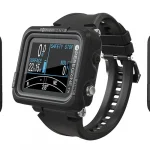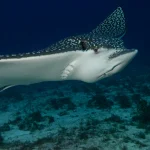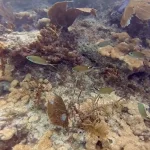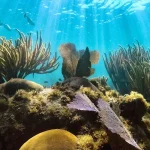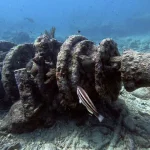Table of Contents
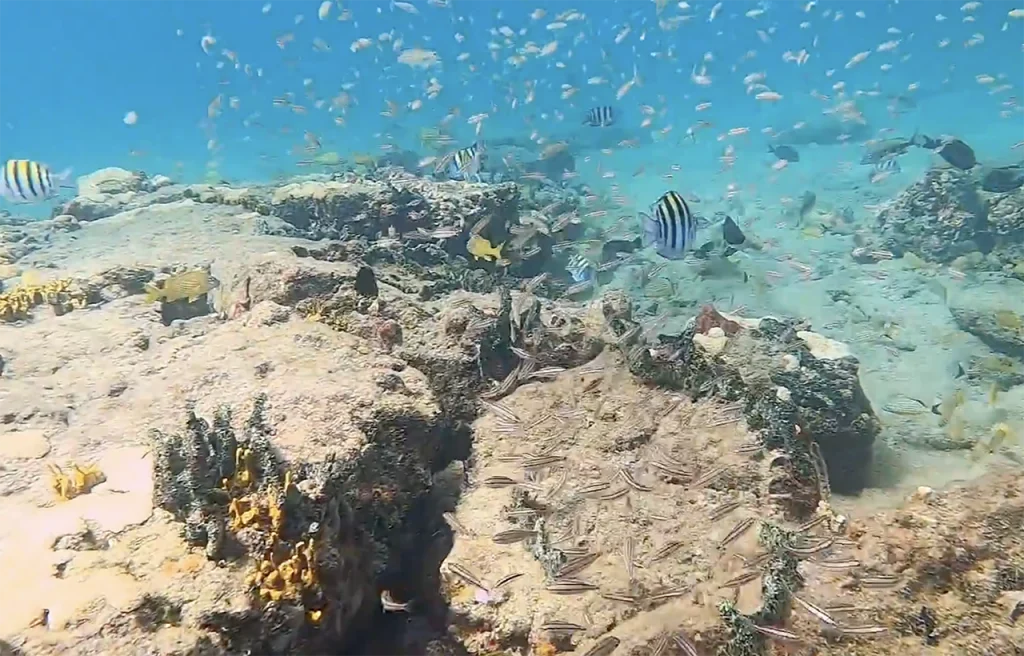
Steve’s Twin Ledges is a popular dive site located just south of the Pompano Beach Pier in Florida. This site features two parallel ledges that run north and south along the shoreline.
Article at a Glance
- Location: Situated just south of Pompano Beach Pier in Florida, Steve’s Twin Ledges is a popular dive site known for its accessibility and vibrant marine life.
- Depth Range: The site features depths between 15 to 50 feet (4.5 to 15 meters), making it suitable for both beginners and advanced divers.
- Best Diving Season: The optimal time to dive is from late spring to early fall (May to September), when water temperatures are warm and visibility is generally clearer.
- Visibility Conditions: Divers can expect visibility ranging from 20 to 40 feet, with the potential for better conditions on calm days.
- Marine Biodiversity: The site is home to a rich variety of marine life, including tropical fish, lobsters, nurse sharks, and sea turtles, providing exciting opportunities for underwater photography and exploration.
- Unique Features: Steve’s Twin Ledges consists of two parallel ledges with coral formations and underwater valleys, offering diverse underwater landscapes to explore.
- Conservation Efforts: Environmental conservation initiatives include the use of mooring buoys to protect coral reefs and educational programs promoting responsible diving practices.
Steve’s Twin Ledges Pompano Beach
- Location: South of Pompano Beach Pier, Florida
- Depth: Maximum depth ranges from 15 meters (50 feet) on the western ledge to about 12-15 meters (40-45 feet) on the eastern ledge.
- Accessibility: The site is typically accessed by boat, and it is recommended for open water certified divers due to its depth and underwater features.
Navigation Tips
Navigating the site can be somewhat challenging due to gaps between the ledges. It is advisable to start at either end of the landward ledge and follow the reef edge. If lost, divers can head east to find the seaward ledge.
What Marine Life Can I Expect To See?
- Tropical Fish: The site is teeming with colorful fish, including:
- French Angelfish
- Squirrelfish
- Parrotfish
- Trumpet Fish
- Yellow-striped Grunts
- Sweeper Fish.
- Coral and Sponges: The underwater landscape is adorned with various types of coral and sponges, such as:
- Purple Sea Fans
- Tube Sponges
- Gorgonians
- Lobsters: During the lobster season, divers often spot Caribbean spiny lobsters hiding in crevices and under ledges, adding to the excitement of the dive.
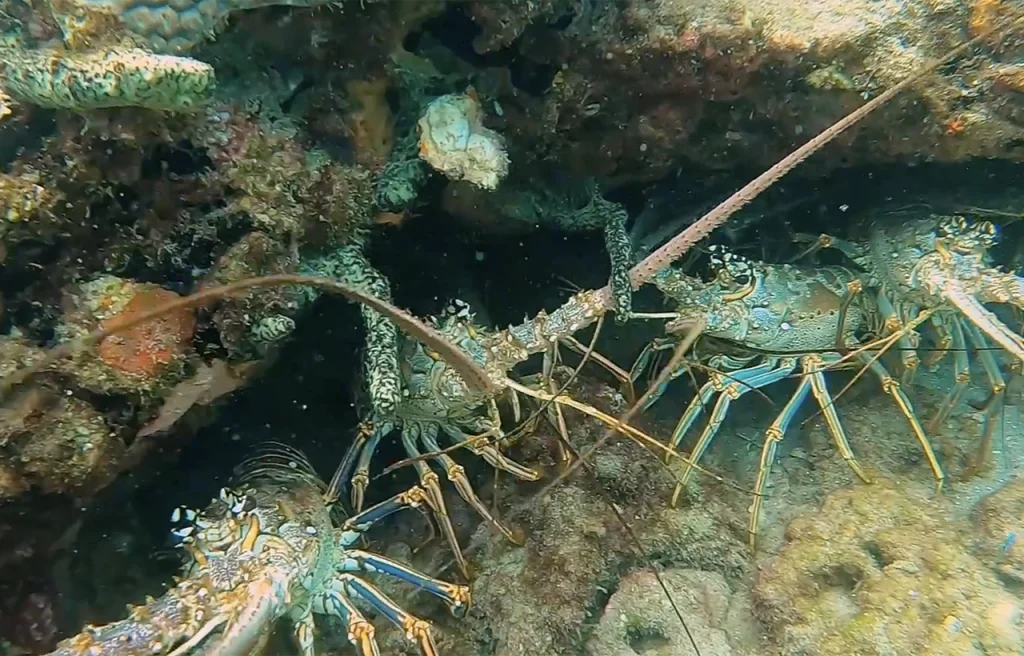
What Do Divers Say About This Site?
- Rich Marine Life: Many divers appreciate the abundance of marine species at the site, including vibrant tropical fish such as French angelfish and parrotfish, as well as lobsters, especially during the mini lobster season. The diverse ecosystem enhances the overall diving experience.
- Accessibility: The site is noted for being suitable for divers of all skill levels, with depths ranging from 12 to 15 meters (approximately 40 to 50 feet). This makes it an excellent choice for both novice and experienced divers looking to explore the underwater environment without requiring advanced technical skills.
- Visual Appeal: Divers frequently mention the stunning underwater scenery, including colorful coral formations and sponges. The presence of purple sea fans and tube sponges adds to the visual richness of the dive.
- Navigation Challenges: Some divers note that while the site can be confusing due to gaps between the ledges, following the reef edge provides a rewarding exploration experience. Navigating from one ledge to another can be part of the adventure, though it requires attentiveness.
- Overall Experience: Many divers find Steve’s Twin Ledges a delightful spot for both recreational diving and underwater photography. The combination of marine life diversity, beautiful coral formations, and accessible depths makes it a favored destination in Pompano Beach.
Key Information
| Category | Details |
|---|---|
| Location | South of Pompano Beach Pier, Florida |
| Depth | 15 to 50 feet (4.5 to 15 meters) |
| Best Time to Dive | Late Spring to Early Fall (May to September) |
| Visibility | Typically 20 to 40 feet, can improve under optimal conditions |
| Suitability | Suitable for both beginners and advanced divers |
| Marine Life | French angelfish, parrotfish, nurse sharks, sea turtles, lobsters |
| Unique Features | Two parallel ledges, coral formations, underwater valleys |
| Access | Primarily accessed by boat |
| Environmental Efforts | Mooring buoys, diver education on responsible practices |
| Activities Available | Snorkeling, diving, spearfishing, lobstering |
Highlights of Diving This Site?
Marine Life Diversity
- Abundant Fish Species: Divers can expect to see a variety of tropical fish, including French angelfish, squirrelfish, parrotfish, and yellow-striped grunts. The presence of these vibrant species adds to the visual appeal of the dive.
- Unique Encounters: The site is also known for sightings of nurse sharks, sea turtles, and occasionally even manta rays, providing exciting moments for divers.
Accessibility
- Shallow Depths: With depths ranging from approximately 12 to 15 meters (40 to 50 feet), Steve’s Twin Ledges is suitable for divers of all skill levels, including beginners. This accessibility allows novice divers to explore comfortably while gaining confidence in their skills.
Scenic Underwater Features
- Coral and Sponges: The ledges are adorned with various coral formations and sponges, such as purple sea fans and tube sponges, creating a visually stunning underwater landscape. These features provide habitats for many marine species.
Navigation and Exploration
- Two Parallel Ledges: The site consists of two parallel ledges that run north-south, offering ample opportunities for exploration. Divers often navigate between the ledges, encountering diverse marine life along the way5. While navigation can be tricky due to gaps, following the reef edge helps maintain orientation.
My Favorite Dive Computers
I have compared the 3 top diving computers for each category to help making the right choice easier:
Iconic Spots At This Site
The Western and Eastern Ledges
- Description: The site features two prominent ledges running parallel to the shoreline. The Western Ledge has a top depth of approximately 33 feet, sloping down to about 5-7 feet of sand on the west side. The Eastern Ledge slopes deeper, reaching around 40-45 feet.
- Marine Life: These ledges are known for their rich marine biodiversity, including colorful tropical fish like sergeant majors, Bermuda chubs, and hiding spots for species such as nurse sharks and grouper.
The Valley Between the Ledges
- Description: This unique area between the two ledges is often described as a “splice in the bedrock,” creating a habitat rich in marine life.
- Exploration Opportunities: Divers can navigate around this valley, which enhances chances of spotting various fish and other marine organisms, making it an exciting area to explore.
Coral Formations
- Description: The vibrant coral formations at Steve’s Twin Ledges add to its beauty. Divers can observe various types of hard and soft corals, as well as sea fans and sponges.
- Significance: These formations not only provide stunning visuals but also serve as crucial habitats for many marine species, making them a focal point for divers interested in Florida’s underwater ecosystems.
Lobster Hiding Spots
- Description: During lobster season, divers frequently find Caribbean spiny lobsters hiding in crevices and under ledges, particularly during mini-season.
- Activities: This makes the site popular for both diving and lobstering, offering an engaging experience for those interested in hunting lobsters while adhering to local regulations.
Environmental Conservation Efforts at Steve’s Twin Ledges
Mooring Buoys
- Purpose: Mooring balls are installed at the site to prevent boats from anchoring directly onto the coral reefs. This helps to minimize anchor damage, which can severely impact coral health and marine habitats1.
Diver Education
- Responsible Practices: Local dive operators provide briefings to divers about responsible diving techniques. This includes guidance on buoyancy control and the importance of not touching or disturbing marine life, which is crucial for maintaining the integrity of the underwater ecosystem.
Marine Protected Area
- Conservation Zone: While not explicitly stated, Steve’s Twin Ledges is likely part of a larger marine protected area or conservation zone. These areas are designated to protect critical habitats and promote biodiversity by restricting certain activities that could harm marine life.
Biodiversity Monitoring
- Research Efforts: The rich marine life at Steve’s Twin Ledges suggests ongoing biodiversity monitoring by local conservation groups or marine biologists. These efforts help assess the health of fish populations and the overall ecosystem, contributing to informed conservation strategies.
Reef Health Assessment
- Monitoring Programs: The presence of diverse coral formations and marine species indicates that the site may be included in broader reef health assessment programs aimed at evaluating and enhancing reef resilience against environmental threats.
Community Engagement
- Sustainable Practices: Divers are encouraged to engage in sustainable diving and lobstering practices. This includes adhering to local regulations, such as no-take zones where fishing is prohibited, allowing fish populations to recover and supporting overall ecosystem health.
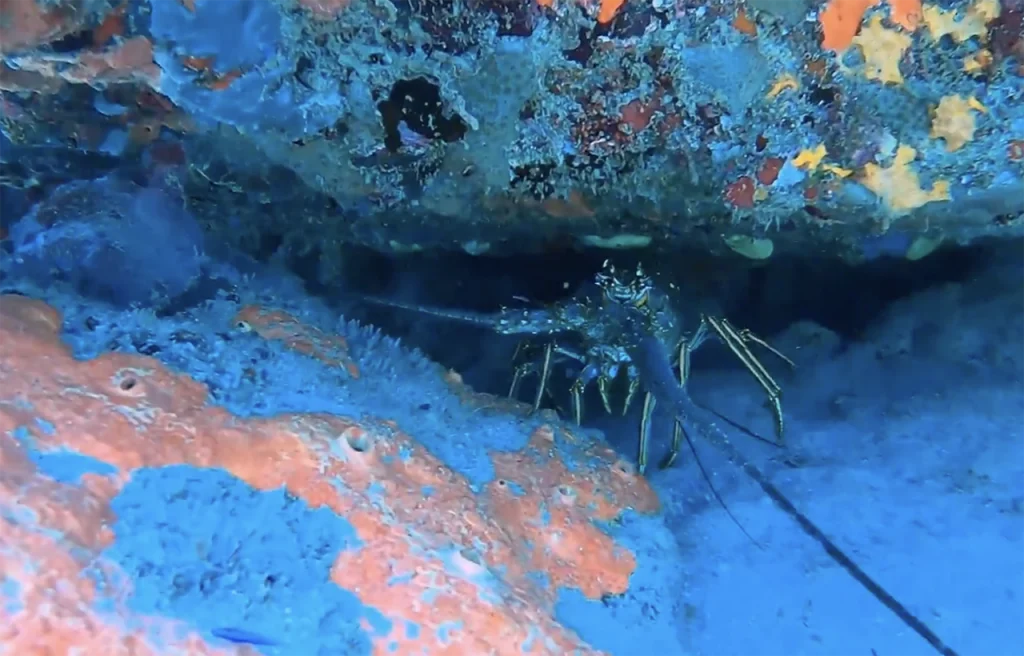
Maximizing Your Diving Experience at Steve’s Twin Ledges
Planning Your Dive
- Check Conditions: Before heading out, research local conditions such as water temperature, visibility, and current strength. Optimal visibility typically ranges from 20 to 40 feet, with calm winds enhancing the experience.
- Timing: Plan your dives during midday when sunlight penetrates the water best, improving visibility and enhancing colors for photography.
Essential Preparation
- Dive with a Buddy: Always dive with a partner for safety. Establish communication signals and a dive plan before entering the water.
- Equipment Check: Conduct thorough pre-dive checks of your gear to ensure everything is functioning properly. Pay special attention to your air supply and buoyancy control device (BCD.
Navigation Strategy
- Explore Systematically: Begin by circling the valley between the two ledges. Then, swim towards the eastern ledge against the current for about 300 feet, cut across the plateau to the western ledge, and drift back to your starting point.
- Use Natural Features: When navigating, use rocks or other underwater features for support instead of excessive finning, which conserves energy and minimizes disturbance to marine life.
Marine Life Observation
- Diverse Ecosystem: Expect to see a variety of marine species including nurse sharks, sea turtles, grouper, yellowtail snapper, and vibrant schools of tropical fish like French angelfish and parrotfish. Look out for unique sightings such as manta rays.
- Take Your Time: Allow yourself ample time at each spot to fully appreciate the biodiversity and underwater landscapes. Rushing can lead to missing fascinating encounters.
Post-Dive Considerations
- Hydration and Recovery: After your dive, rehydrate and rest before engaging in any further activities. This helps with recovery and prepares you for subsequent dives.
Capturing Memories at Steve’s Twin Ledges: Photography Tips
Equipment Essentials
- Underwater Camera: Invest in a quality underwater camera or housing for your existing camera. Compact cameras with underwater capabilities can also yield excellent results.
- Wide-Angle Lens: Use a wide-angle lens to capture expansive underwater scenes, allowing you to include both vibrant marine life and beautiful coral formations.
- Strobe or Flash: If your camera allows, use an external strobe or flash to illuminate subjects and reduce backscatter from particles in the water.
Lighting Considerations
- Natural Light: Plan your dives during midday when sunlight penetrates the water best. This enhances colors and visibility in your photos.
- Avoid Flash in Shallow Waters: In shallow dives like Twin Ledges, using flash can cause backscatter. Instead, rely on natural light where possible.
Composition Techniques
- Rule of Thirds: Use the rule of thirds to create balanced and interesting compositions. Position key elements along the grid lines or at their intersections to draw the viewer’s eye.
- Get Close to Your Subjects: Minimize the distance between your camera and the subject to enhance clarity and reduce backscatter. This is particularly important for capturing detailed shots of marine life.
Capture Unique Moments
- Document Interactions: Focus on capturing interactions between divers and marine life, such as a diver swimming alongside a turtle or observing a school of fish.
- Highlight Unique Features: Take close-up shots of interesting coral formations, textures, and colors that make Twin Ledges special.
Post-Dive Editing
- Editing Software: Use photo editing software to enhance colors and contrast after your dive. Adjusting brightness and saturation can help bring out the vivid hues of marine life.
- Crop and Straighten: Crop images to remove distractions from the edges and straighten horizons for a polished look.
Frequently Asked Questions
When is the best time to dive Steve’s Twin Ledges?
The best time to dive at Steve’s Twin Ledges is influenced by several factors, primarily related to seasonal conditions and tidal patterns.
Optimal Seasons
Late Spring to Early Fall: The period from late spring through early fall (approximately May to September) is generally regarded as the best time for diving at Steve’s Twin Ledges. During this time, water temperatures are warmer, typically ranging from 75°F to 85°F (24°C to 29°C), and visibility tends to be clearer, often between 20 to 40 feet, depending on conditions.
Tidal Considerations
High Tide: Diving is recommended during high tide, as this minimizes the risk of encountering slippery rocks and enhances accessibility. High tides can also improve visibility since debris is less likely to be stirred up during these times.
Avoid Low Tide: Low tides can expose rocky areas, making entry and exit more challenging and potentially leading to murkier water due to sediment being dragged out as the tide recedes.
Weather Conditions
Calm Winds: Ideal diving conditions occur when winds are calm. High winds can create choppy waters, reducing visibility and making the dive less enjoyable. It’s advisable to check wind forecasts before planning your dive.
What is the visibility like while diving Steve’s Twin Ledges?
Visibility while diving at Steve’s Twin Ledges typically ranges from 20 to 40 feet, depending on various factors such as weather and tidal conditions. On particularly good days, visibility can extend even further, allowing for clear views of the vibrant marine life and coral formations present at the site.
Factors Affecting Visibility:Weather Conditions: Calm winds and minimal wave action contribute to clearer waters. High winds can stir up sediment, reducing visibility.
Tidal Movements: High tides generally improve visibility by reducing sediment disturbance on the ocean floor.
How deep are the dives at Steve’s Twin Ledges?
Diving at Steve’s Twin Ledges features varying depths that cater to divers of different skill levels. The dive site has a minimum depth of approximately 15 feet (4.5 meters) and a maximum depth of around 50 feet (15 meters), depending on the specific ledge being explored.
Western Ledge: The top of this ledge is about 33 feet (10 meters) deep and gradually slopes down.
Eastern Ledge: This ledge descends to around 40-45 feet (12-14 meters), providing a slightly deeper diving experience.
Is Steve’s Twin Ledges suitable for beginners?
Yes, Steve’s Twin Ledges is suitable for beginners. The dive site features depths ranging from 15 to 50 feet, with the most accessible areas typically around 33 feet for the western ledge and 40-45 feet for the eastern ledge. This range allows novice divers to explore comfortably without the pressure of deeper dives.
Shallow Depths: The relatively shallow depths make it manageable for first-time divers and those with limited experience, providing a safe environment to gain confidence.
Rich Marine Life: Beginners can enjoy a vibrant underwater ecosystem, with opportunities to see various marine species, including tropical fish, lobsters, and possibly even nurse sharks and sea turtles.
Guided Dives: Many local dive operators offer guided tours, which can enhance safety and provide valuable support for novice divers.
Is Steve’s Twin Ledges suitable for advanced divers?
Yes, Steve’s Twin Ledges is suitable for advanced divers, although it is primarily recognized for its accessibility to beginners.
Depth and Structure
Depth: The site features a maximum depth of approximately 50 feet (15 meters), which allows advanced divers to explore comfortably without the need for technical diving skills.
Two Parallel Ledges: The structure of the twin ledges provides opportunities for navigation and exploration, appealing to divers who enjoy exploring underwater topography.
Marine Life Diversity
Rich Biodiversity: Advanced divers can appreciate the diverse marine life, including species like nurse sharks, sea turtles, and various tropical fish. Unique sightings, such as manta rays and lobsters, can add excitement to the dive.
Additional Activities
Spearfishing and Lobstering: The site is known as a good location for spearfishing and lobstering, offering advanced divers opportunities to engage in these activities while adhering to local regulations.
Navigation Challenges: Advanced divers can practice their navigation skills by circumnavigating the ledges and exploring the gaps between them.
Relaxed Diving Experience
Although not a deep or technically challenging dive site, Steve’s Twin Ledges allows advanced divers to enjoy a relaxed dive with rich marine life and scenic underwater views. This makes it an appealing option for those looking to unwind while still engaging with the underwater environment.
Pompano Beach Dive Sites
- Pompano Trench
- Lost Ledge
- Suzzane’s Ledge
- Pompano 3rd Reef Ridge
- Steve’s Twin Ledges
- Shark Reef
- Touchdown Reef
- Pompano Drop Off
- Grouper Bend
- Nursery
- Crab Cove
- Sea Ranch
- Hillsboro Ledge
- Lighthouse Ledge
- Mark’s Ledge
- Moray Bend
- Nolan’s Ledge
- Separated Rocks (Deerfield)
- The Horseshoe
- Abbey Too
- San Remo
- Shark Ledge
- Spotfin Reef

